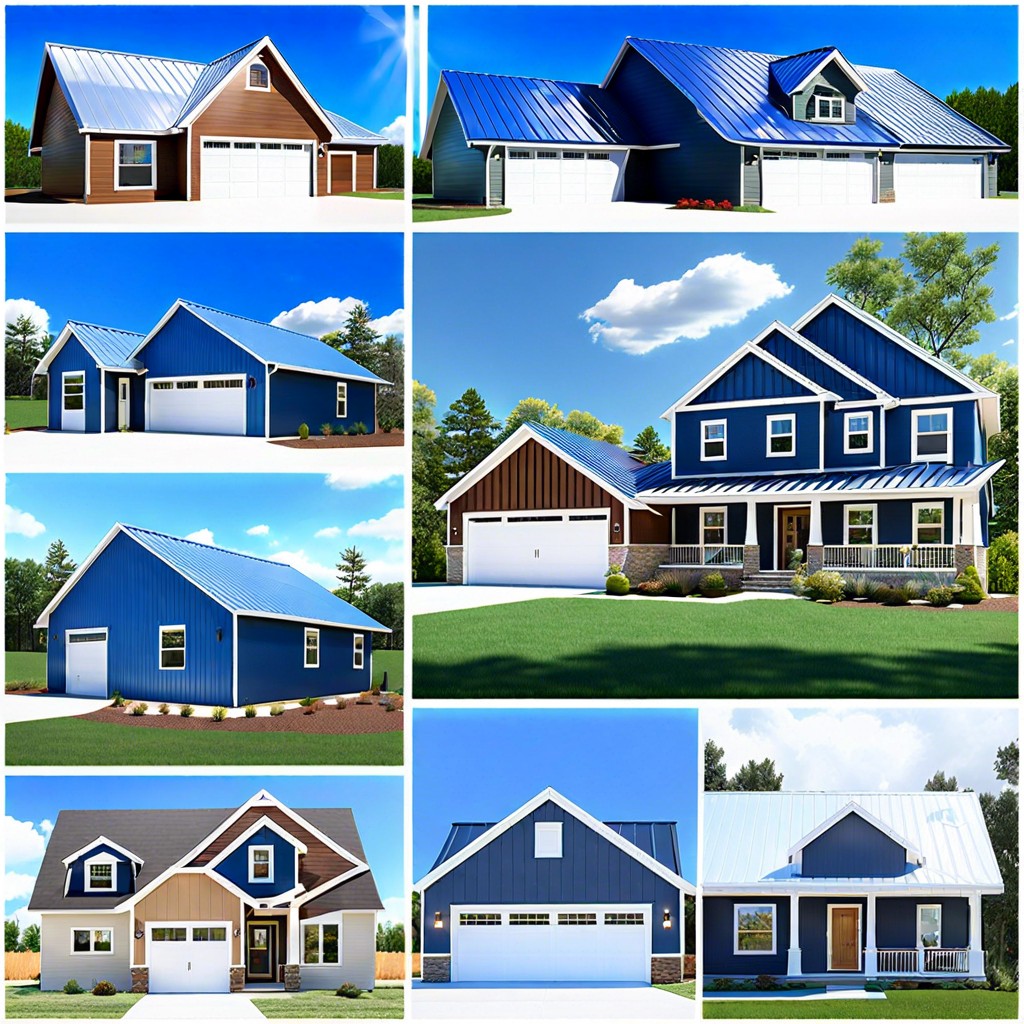Last updated on
Discover the factors that influence the cost of a metal roof and understand how they can affect your budget.
Key takeaways:
- Steel: Galvanized and Galvalume options, gauge impacts cost.
- Steel price range: .35 – .50 per square foot.
- Aluminum: lightweight, rust-resistant, lasts over 50 years.
- Aluminum price range: .50 – .50 per square foot.
- Copper: durable, develops patina, costs – per square foot.
Metal Roofing Costs By Type

Steel is often the most budget-friendly option, with costs varying based on the thickness and quality of the steel panels. Galvanized and Galvalume are common types, with Galvalume typically commanding a higher price due to its superior corrosion resistance.
Aluminum roofing, lighter than steel and resistant to saltwater corrosion, is a prime choice for coastal regions. Its cost exceeds that of steel but offers a longer lifespan and typically requires less maintenance.
Copper roofing, while the most expensive, boasts a unique aesthetic appeal and exceptional durability. It develops a patina over time that can protect the metal from corrosion, extending its life.
Zinc, similar to copper, carries a higher upfront cost but offers remarkable longevity and a lower environmental impact, as it requires less energy to produce and is fully recyclable.
Each metal roofing type presents its own set of advantages and cost considerations, making it essential to evaluate both initial outlay and potential long-term benefits when selecting materials for a roofing project.
Steel
Galvanized and galvalume are the two most common forms of steel roofing. Galvanized steel is coated in zinc, which provides excellent protection against corrosion and is more budget-friendly. Galvalume steel, with its aluminum and zinc coating, offers superior resistance to corrosion, but can be slightly more expensive.
The gauge or thickness of the steel impacts both the durability and cost. Thicker, lower gauge metals are more durable and costlier. Residential roofs often utilize 24 or 26 gauge steel, with the 24 gauge being a sturdier option.
Steel roof costs per square foot vary, influenced by the type of steel, gauge, and finish. On average, homeowners might expect to pay between $3.35 to $4.50 per square foot for the material alone. Professional installation adds to the total cost, typically doubling the price.
Coating options, such as factory-applied paint or stone-coated steel, can enhance aesthetics and longevity. These finishes come at an additional cost but can mimic the look of traditional materials and provide additional protective benefits.
When considering steel roofing, it’s important to weigh the initial cost against the long-term savings in maintenance, durability, and energy efficiency which steel provides.
Aluminum
When considering aluminum for roofing, it’s valued for its lightweight nature and rust resistance, which contribute to its durability and longevity. This material reflects heat effectively, aiding in the reduction of cooling costs during hot weather. On average, aluminum panel roofs cost between $3.50 and $5.50 per square foot for the material alone.
The price can increase with premium coatings that improve the roof’s appearance and resistance to weathering. Also, aluminum is more malleable than steel, allowing for a variety of design customizations that may potentially add to the overall cost.
Though initially more expensive than some other metal options, aluminum roofing is often a cost-effective investment due to its maintenance-free lifespan which can exceed 50 years. It’s important to note that while aluminum is not as strong as steel, it typically withstands denting from hail and foot traffic better than softer metal options like copper or zinc.
As it is recyclable, an aluminum roof also offers an eco-friendly option for homeowners who prioritize sustainability. The installation costs for aluminum are comparable to other metal roofs but vary greatly depending on the complexity of the roof design and local labor rates.
Copper
Copper boasts a distinctive appearance that evolves over time, developing a verdigris patina that many homeowners find appealing. This natural weathering does not compromise its durability; a copper roof can exceed 50 years with minimal maintenance. Its natural properties also make it highly resistant to fire, hail, and mildew.
In terms of costs, copper is at the premium end of the metal roofing spectrum due to its longevity and aesthetic qualities. The initial outlay can be significant; prices typically range from $9 to $20 per square foot. This figure can be influenced by factors such as the complexity of the roof design and current market prices for raw copper.
Apart from its durability and stunning visual change, copper is lightweight compared to other roofing materials, which can benefit the structural integrity of the building. Moreover, its recyclability makes it an eco-friendly roofing option, as it can be recycled without loss of quality.
Despite its higher upfront cost, investing in a copper roof could translate into long-term savings due to its robustness and the infrequent need for replacement or repair, not to mention the charm and character it adds to a property.
Zinc
Zinc roofs boast remarkable longevity, often lasting over 100 years with proper maintenance. Their longevity is attributed to the metal’s ability to develop a protective patina that shields the roof from weathering and corrosion.
This natural characteristic is particularly beneficial, as it significantly diminishes the need for repairs or replacements over the roof’s lifetime. In terms of cost, zinc is generally positioned at the higher end of the metal roofing market. The initial investment is relatively steep due to the metal’s premium status and the expertise required for installation.
Furthermore, zinc’s malleability makes it excellent for complex roof designs, accommodating intricate shapes and angles with ease. This versatility, however, may introduce additional labor costs.
It’s also worth noting that zinc’s eco-friendly qualities are compelling. It’s 100% recyclable, which means it contributes to a building’s overall sustainability.
When considering zinc, factor in the full scope—its durability, ease of maintenance, aesthetic attributes, and ecological impact—to appreciate its value beyond the upfront cost.




